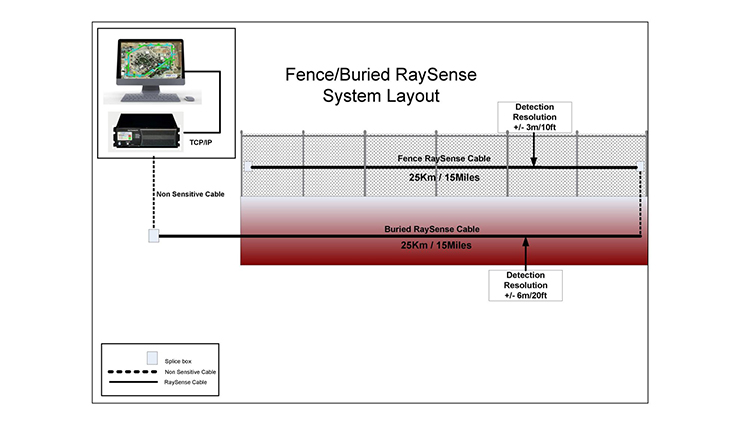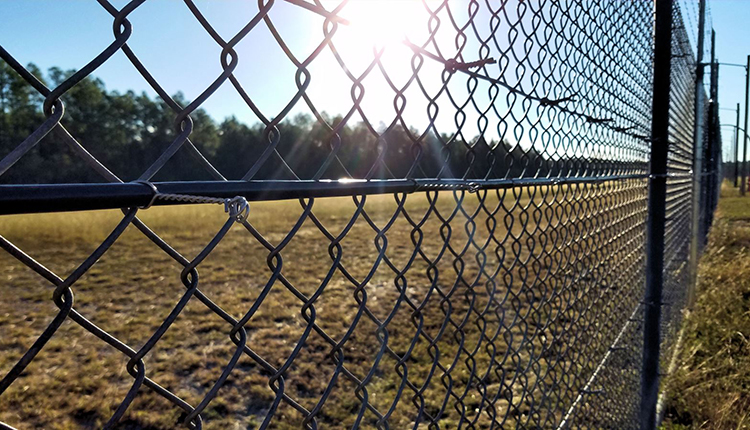The Advantages of a Fiber Optic Security System: Why It’s the Next Step of Secure Networks
The Advantages of a Fiber Optic Security System: Why It’s the Next Step of Secure Networks
Blog Article
Secure Your Residential Or Commercial Property With Dependable Fiber Optic Safety And Security Solutions
In a period where safety threats are progressively sophisticated, the demand for reliable protection remedies is paramount. Fiber optic safety systems stand out by using phenomenal reliability and efficiency, leveraging innovative light transmission innovation to improve surveillance capacities. These systems not only supply resistance to electromagnetic interference yet additionally promise long-lasting expense performance through decreased upkeep demands. Nonetheless, the choice to purchase such an option entails careful factor to consider of various elements. Comprehending the ins and outs of fiber optic security can brighten the course to safeguarding your home extra properly. What aspects should be discovered to optimize your financial investment?
Advantages of Fiber Optic Security
Fiber optic security services provide a series of benefits that make them progressively vital in today's digital landscape. Among one of the most considerable benefits is their remarkable bandwidth ability, which enables the transmission of huge amounts of information over fars away without substantial signal destruction. This capacity is especially advantageous for safety systems that depend on high-def video monitoring and real-time tracking.
In addition, fiber optic cords are inherently a lot more secure than traditional copper circuitry. They are immune to electro-magnetic interference, making them much less vulnerable to hacking or eavesdropping. This boosted protection is important for shielding delicate information and keeping the stability of surveillance systems.
Additionally, optical fiber are much more long lasting and immune to environmental elements, such as wetness and temperature level fluctuations, ensuring long-lasting integrity and reduced maintenance expenses. The lightweight nature of fiber optic wires also simplifies setup procedures, permitting better versatility in system layout.
Just How Fiber Optic Systems Work
In modern-day protection applications, the procedure of fiber optic systems counts on the principles of light transmission through versatile glass or plastic fibers. These fibers are made to lug light signals over lengthy distances with minimal loss, making them ideal for sending information associated with safety and security tracking. The core of the fiber, surrounded by a cladding product, ensures that light signals stay contained within the core via a sensation called overall inner reflection.
When integrated right into safety systems, fiber optic cable televisions can transmit information from various sensing units, such as video cameras, motion detectors, and alarm systems, to a central surveillance terminal. The high data transfer capacity of optical fiber enables the transmission of large quantities of information all at once, allowing real-time surveillance and punctual reaction to possible hazards.

Types of Fiber Optic Protection Solutions
Different kinds of fiber optic safety and security options have actually emerged to improve surveillance and security across different settings. One noticeable service is fiber optic border intrusion discovery systems (PIDS), designed to keep an eye on and secure building limits via the detection of vibrations and disruptions along fiber optic cables. These systems supply real-time informs, making it possible for prompt actions to unapproved access efforts.
An additional efficient remedy is fiber optic video monitoring. This modern technology leverages high-definition cams attached via fiber optic wires to transmit video data over cross countries without substantial view loss of quality. This arrangement is particularly useful in extensive locations, such as airport terminals and industrial sites, where conventional copper cables may falter.
Furthermore, fiber optic sensing units are progressively used for ecological surveillance, finding adjustments in temperature level, pressure, or acoustic signals that could indicate safety and security breaches or hazardous conditions. These sensing units offer high level of sensitivity and accuracy, making them optimal for critical infrastructure protection.

Installment and Maintenance Tips
Effective installment and upkeep of fiber optic safety and security options are important for ensuring their optimal efficiency and longevity. Fiber optic wires must be routed firmly, preventing sharp bends or spins that could jeopardize their stability.
During installment, it is a good idea to carry out extensive testing of the system to verify that all components are working correctly. Regular maintenance checks must be scheduled to check the fiber optic cables for any type of signs of wear or damage, along with to make certain that connections continue to be protected. Cleansing the connectors regularly is additionally important to avoid signal loss as a result of dust Our site or debris.
In addition, keeping an upgraded supply of mounted parts and their specifications can assist in less complicated troubleshooting and upgrades. By adhering to these setup and upkeep tips, homeowner can optimize the effectiveness of their fiber optic safety and security options, ensuring a trustworthy defense versus possible threats.
Comparing Expenses and Efficiency
When reviewing fiber optic security options, understanding the balance between expenses and efficiency ends up being extremely important (security fibers). Organizations has to take into consideration the in advance investment, continuous maintenance costs, and the long-lasting value these systems supply. While fiber optic systems might require a higher initial installation cost contrasted to traditional copper wiring, their durability and reduced sensitivity to electro-magnetic disturbance usually convert to reduced maintenance costs gradually
Efficiency is one more vital element; fiber optic safety and security systems offer improved information transmission speeds and improved reliability. They can cover bigger distances without signal degradation, making them perfect for expansive buildings or remote locations. The high bandwidth ability sustains innovative safety applications, such as high-definition video clip surveillance and real-time surveillance, which are necessary for comprehensive protection management.
Eventually, the choice between price and efficiency must be directed by specific safety and security needs and take the chance of evaluations. Organizations has to assess their special demands, considering elements like property size, security dangers, and technical developments. By performing an extensive cost-benefit evaluation, stakeholders can More hints make informed decisions that straighten with their protection goals while ensuring a sound investment in fiber optic modern technology.
Conclusion
In final thought, fiber optic safety services use substantial advantages in terms of performance, dependability, and resistance to ecological disturbances. These systems enhance surveillance abilities and boundary safety, making them a reliable selection for comprehensive protection. Initial setup expenses may be higher, the long-term benefits, including reduced maintenance and superior functionality, justify the investment. Ultimately, the adoption of fiber optic technology represents a forward-thinking approach to safeguarding residential properties versus progressing safety dangers.
Report this page